Groundbreaking planes that changed how we travel
History's most influential aeroplanes
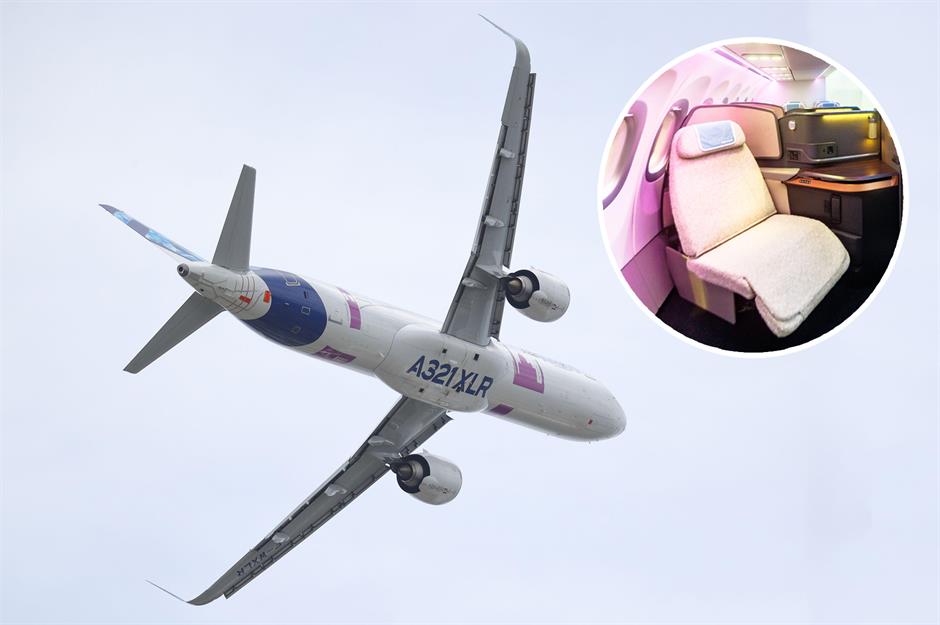
From the COVID-19 pandemic to the rise of carbon offsetting, it's been a tumultuous few years for everyone involved in aviation. However, the industry has experienced all manner of twists and turns down the decades, from the invention of the jet airliner to the rise and fall of supersonic travel.
Click through this gallery to explore some of the most influential and important commercial planes to have ever graced our skies...
1910s: Benoist Type XIV
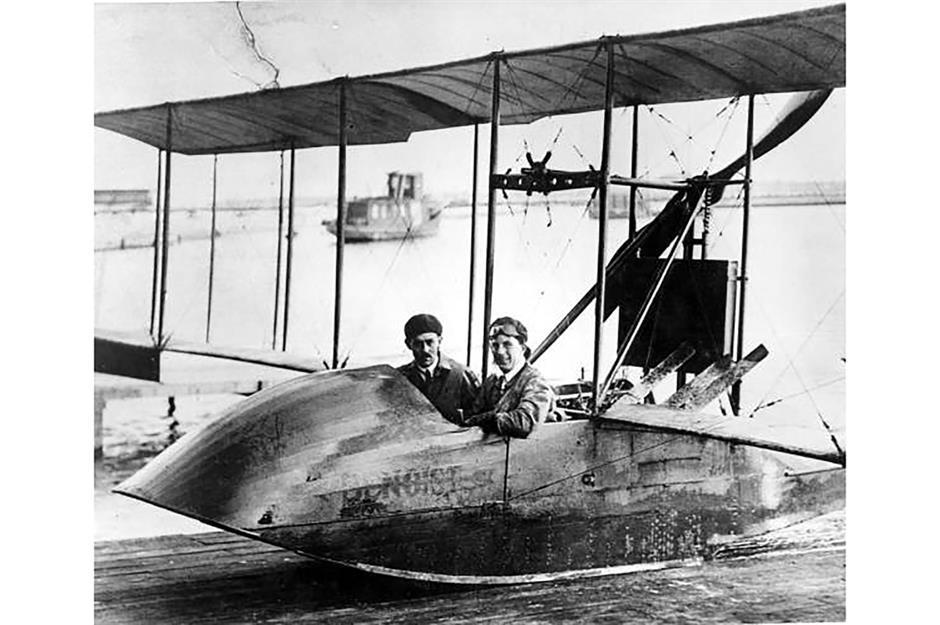
This rather modest-looking flying boat conducted the world's first scheduled airline flight. Designed by Thomas W. Benoist, the Benoist Type XIV first flew from the Florida city of St Petersburg to Tampa in January 1914 and was one of two aircraft belonging to the St Petersburg-Tampa Airboat Line.
1910s: Benoist Type XIV
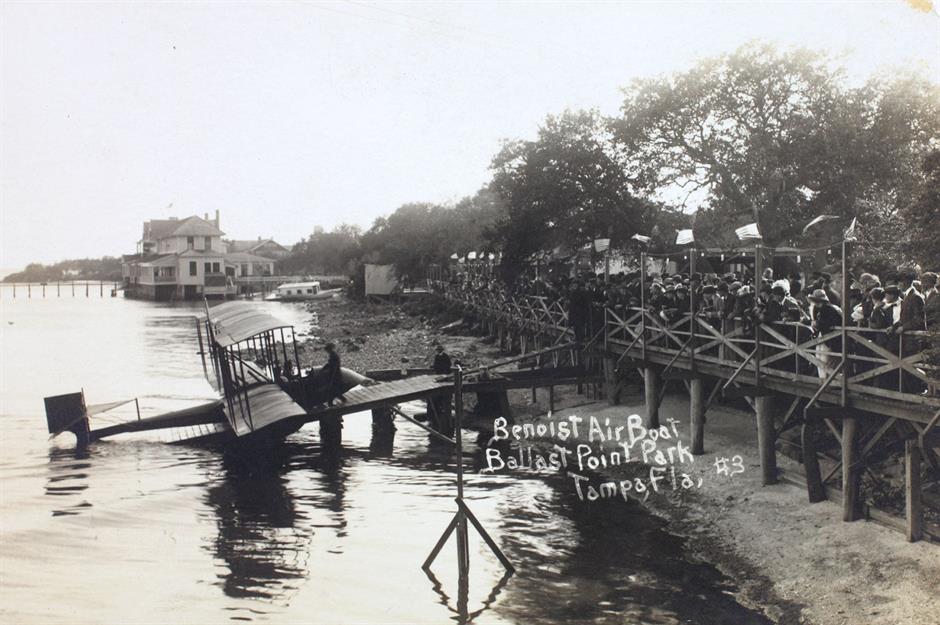
After the airline's first flight, it continued to operate between the two cities, flying over Tampa Bay and charging passengers $5 (£3.74) for the 23-minute journey. However, the aircraft was so small there was space for just one passenger who had to sit next to the pilot, quickly rendering the entire operation an unaffordable venture.
1910s: Benoist Type XIV
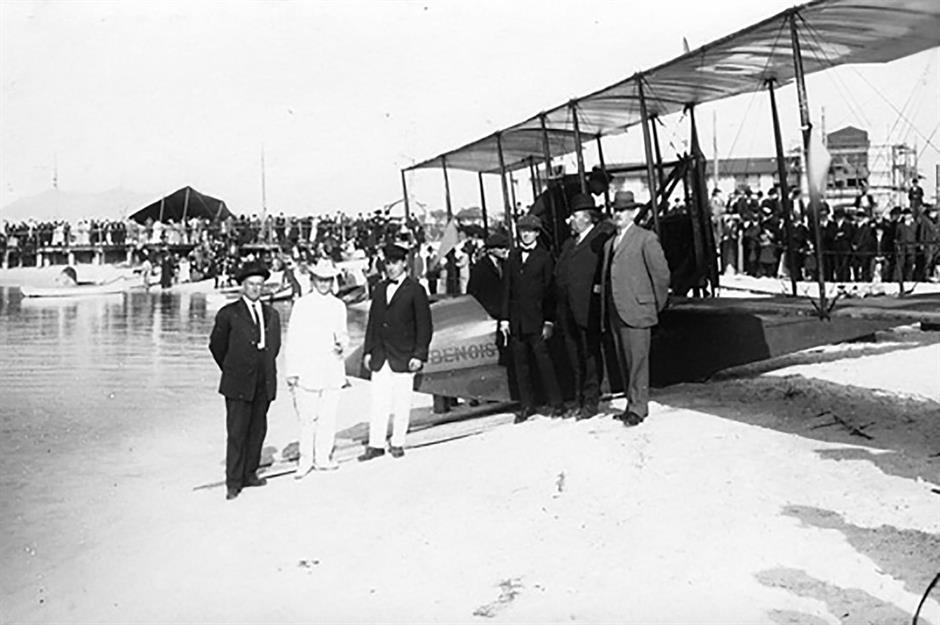
Having carried 1,205 passengers in the space of three months, the airline folded and the Benoist became the plaything of the wealthy. In 1984, a flying replica was built for the 70th anniversary of the flight, which is now on display in the St. Petersburg Museum of History.
1910s: Handley Page H.P.42
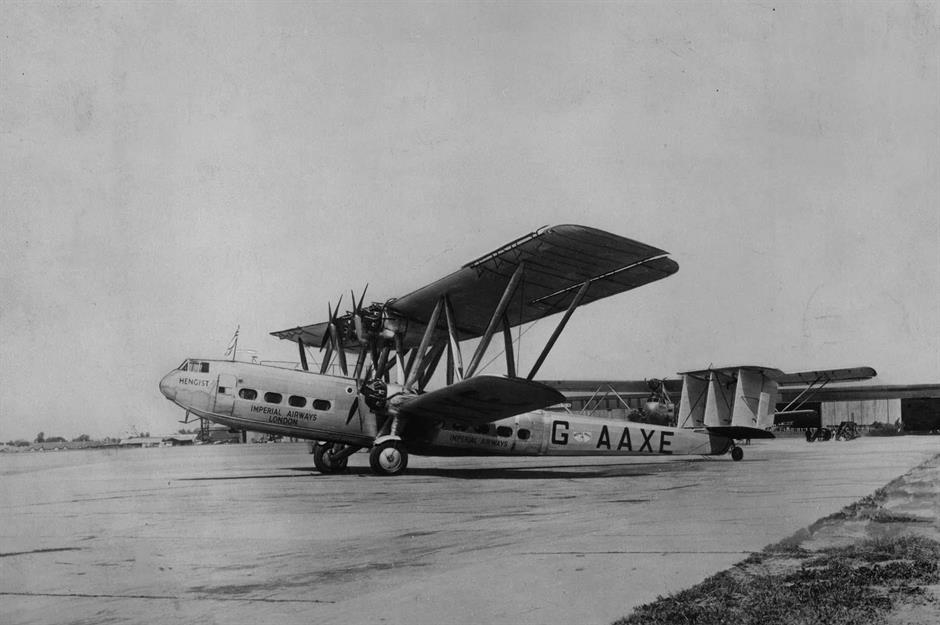
Only four of these four-engine biplanes were ever built, but its impact on commercial aviation was still huge, particularly in Britain. Designed by Handley Page and first acquired by Air Transport and Travel, Ltd. (which later formed Imperial Airways and then British Airways), it was the biggest biplane aircraft ever built. It first flew from London to Paris in 1919 with a single passenger on board – a newspaper reporter.
1910s: Handley Page H.P.42
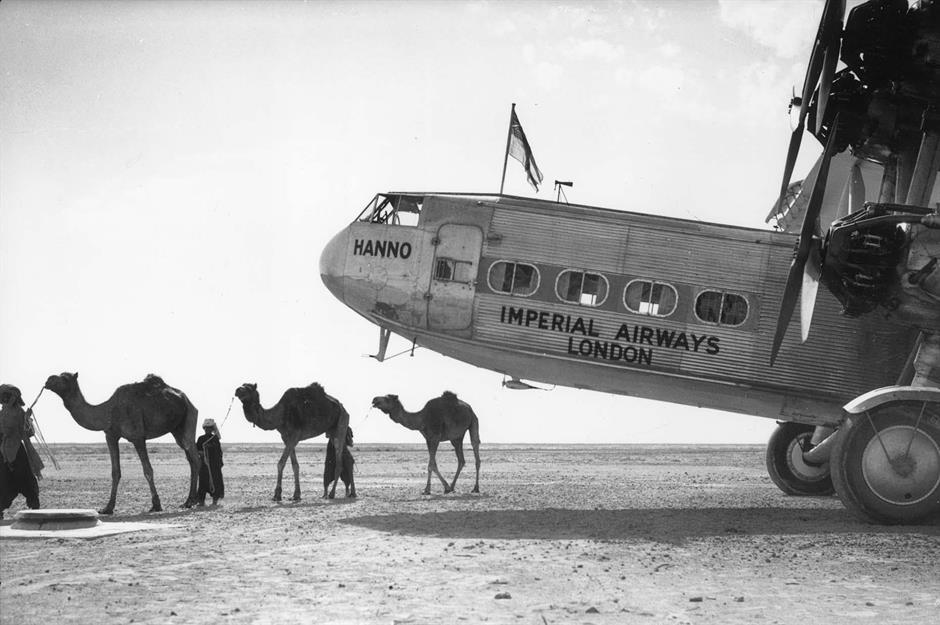
The Handley Page H.P.42 was Imperial Airways' first major success, as it was specially designed to handle operations from unprepared ground. This meant it was not only ideal for taking off from the grass runways at Croydon Airport, in the south of England, but it also made it safer and simpler to land in desert environments across Africa and Asia.
This led to the establishment of its long-haul routes and the creation of lots of small airports across Africa, many of which are still used today. Here, the aircraft is pictured in Pakistan in 1934.
1910s: Handley Page H.P.42
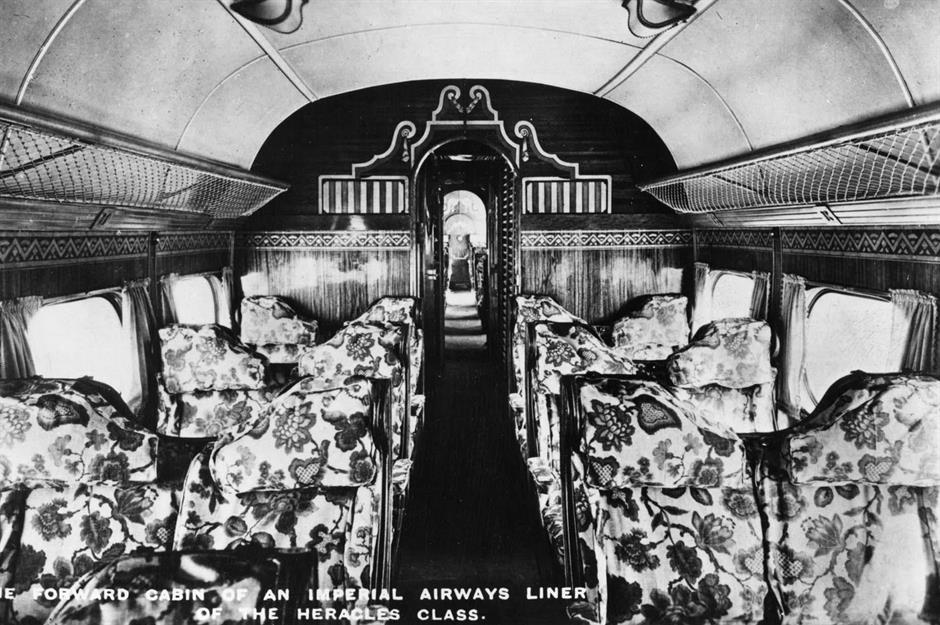
The aircraft was the domain of the elite, with high-ranking officials and wealthy businessmen taking to the skies to enjoy Imperial Airways' luxury service, which included seven-course meals, plush wall-to-wall carpeting and a stand-up bar. Unfortunately, all of the HPs have now been destroyed – some during World War II when the aircraft were drafted into the RAF – so only archive photographs survive.
1930s: de Havilland DH89 Dragon Rapide
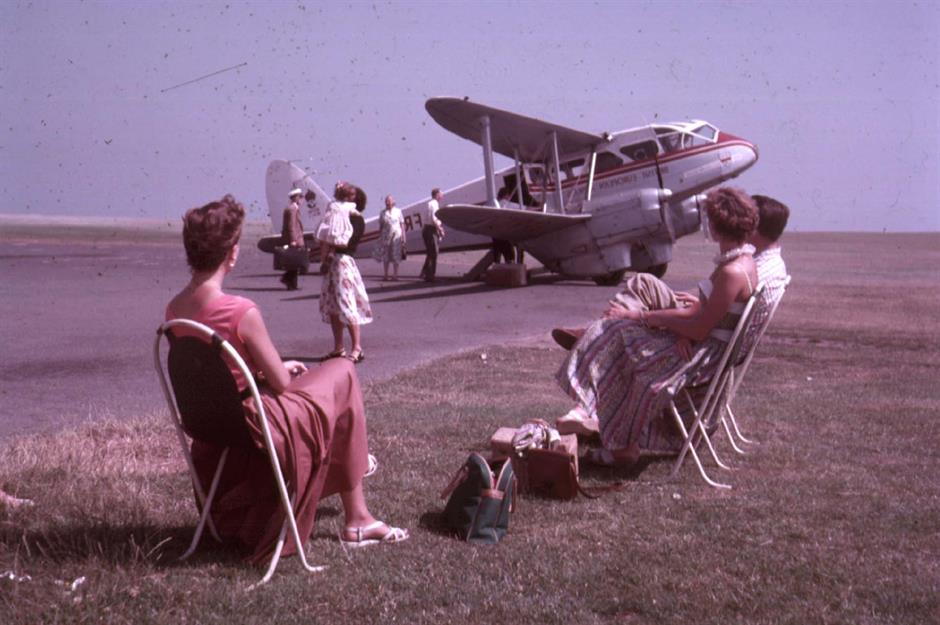
Launched in 1934, the de Havilland Dragon Rapide was an immediate success for regional and independent operators in the aviation industry and over 700 were built and sold all over the world. The wooden aircraft, made with plywood, carried six to eight passengers, while variations after the original version saw the addition of cabin heating, larger windows and upholstered seats.
1930s: de Havilland DH89 Dragon Rapide
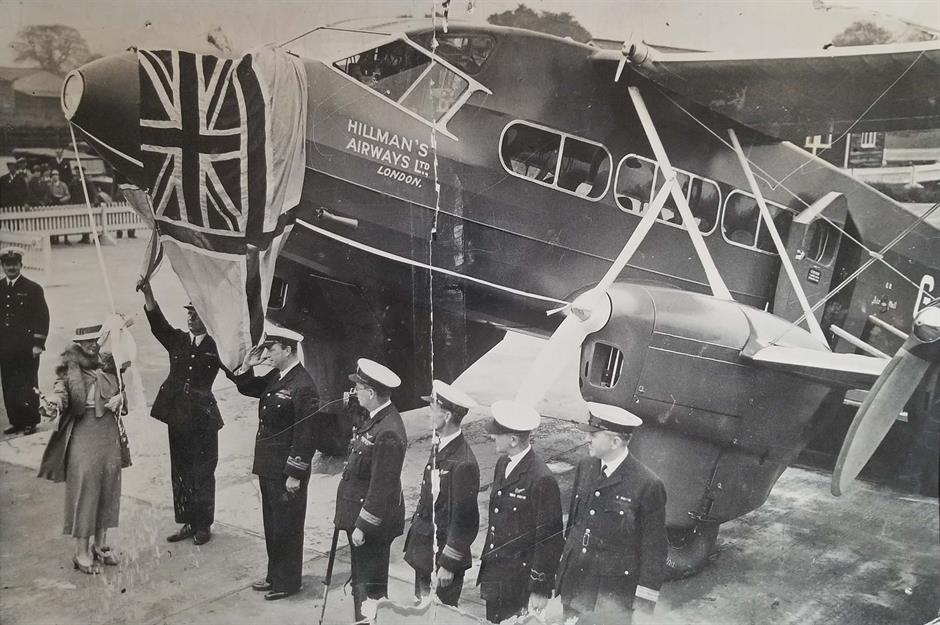
Thanks to its low running costs and single pilot operation, it even led to the establishment of the first-ever (relatively) low-cost airline, Hillman's Airways (which later became part of British Airways). Although the airline used two other de Havilland planes to operate domestic services, a de Havilland Dragon allowed the airline to establish an international route, connecting Romford and Paris-Le Bourget.
1930s: de Havilland DH89 Dragon Rapide
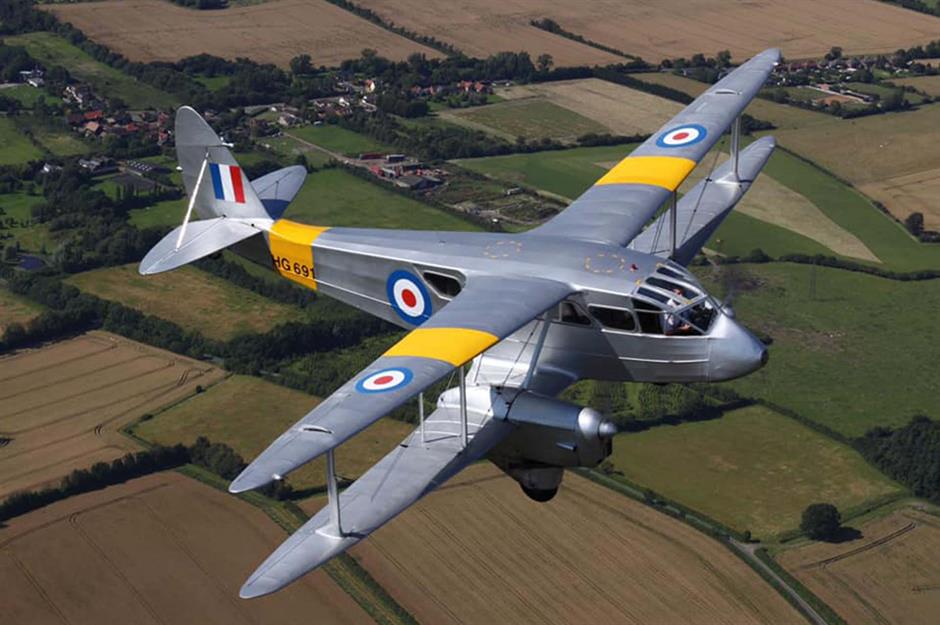
It's still possible to experience flight in a Dragon Rapide thanks to UK-based Classic Wings, which operates sightseeing excursions, flying above Cambridge, London, or Cambridge, Ely and Newmarket. The company's two planes have been restored to meet modern regulations and the price – starting at £99 ($125) – includes entry to the Imperial War Museum in Duxford.
Love this? Follow our Facebook page for more travel inspiration
1930s: Douglas DC-3
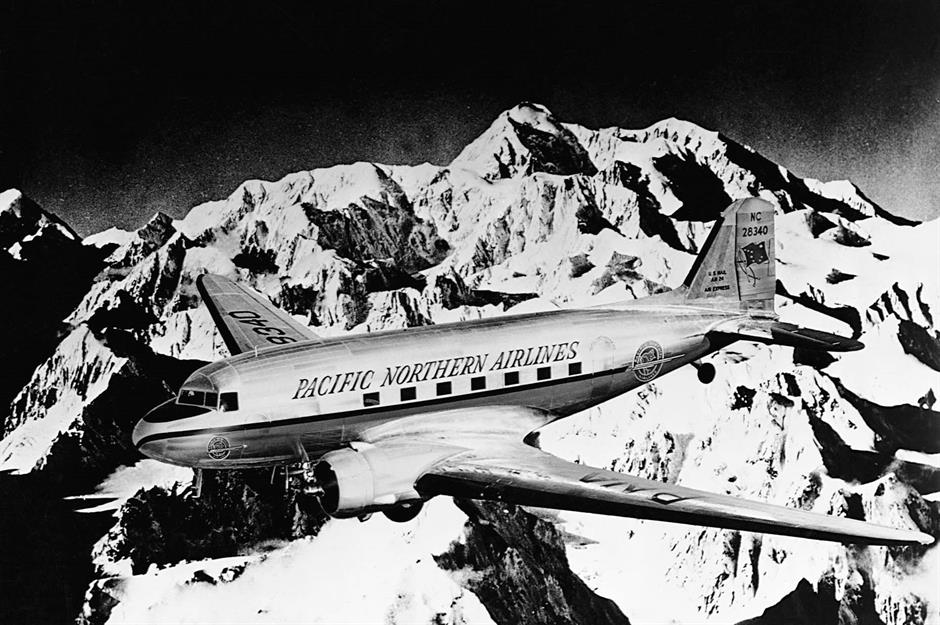
First taking to the skies in the mid-1930s, the Douglas DC-3 became the backbone of many established airlines and today there are still some 170 aircraft serving as passenger planes or cargo vehicles. It truly revolutionised commercial air travel, as it was one of the first planes to have a retractable undercarriage and the first to make a profit from carrying only passengers.
1930s: Douglas DC-3
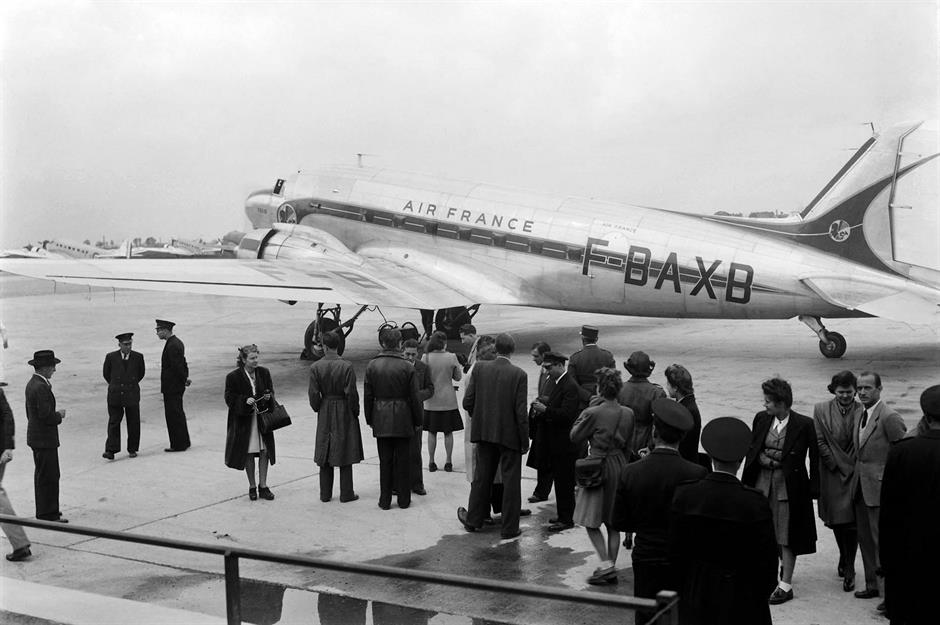
Built by the Douglas Aircraft Company, based in the US, the plane first flew on 17 December 1935 at Clover Field in Santa Monica, California, and later popularised transcontinental travel in America. It would fly from coast to coast in just 15 hours with three refuelling stops. By the time production ended in 1945, it's estimated that around 13,000 of this aircraft type were built.
1930s: Douglas DC-3
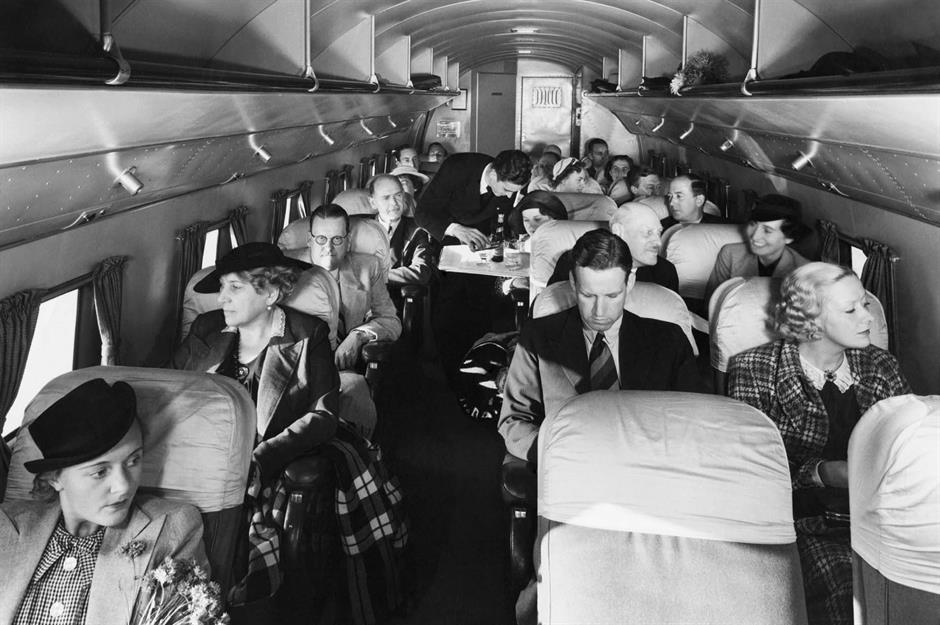
Its interior was much like the airliners we know today, but service on board was far beyond what we are used to in modern times. Flying when air travel was still glamorous, passengers on board the Douglas DC-3 were served cocktails and steaks. Pilots would often stroll the cabin to greet travellers once the plane was at cruising altitude and the sleeper flights had curtained berths with duvets and feather mattresses.
1940s: de Havilland Comet
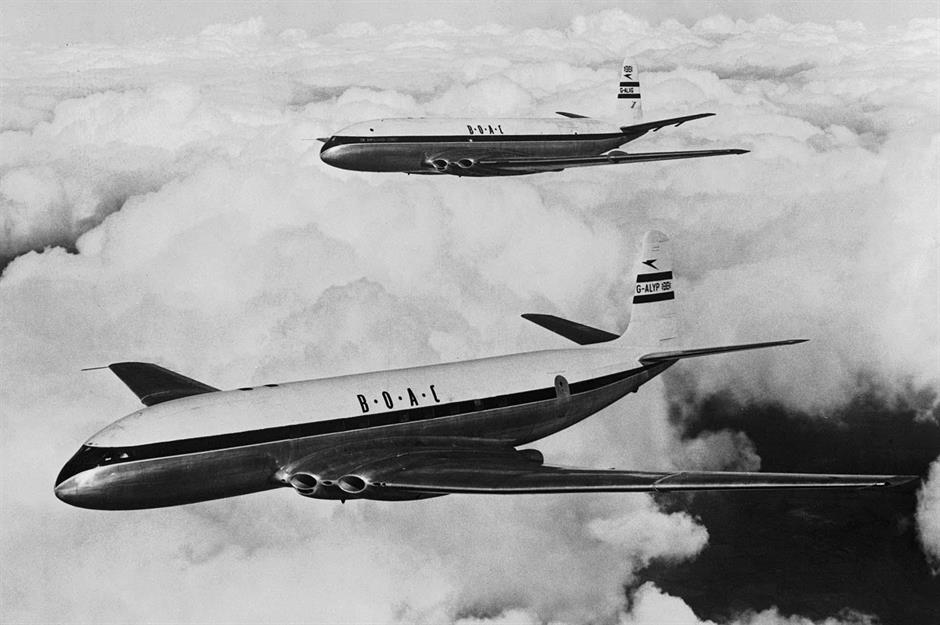
Hailing from Britain, the de Havilland Comet was the world's first commercial jet airliner. Built in the late 1940s and first introduced to the commercial market in 1952, it was a cut above the rest, and not just because of its turbojet engines. Its first flight took off from London Airport (later London Heathrow) and travelled to Rome with 36 passengers and six crew members on board – but Rome was just the first stop on its journey to Johannesburg, South Africa.
1940s: de Havilland Comet
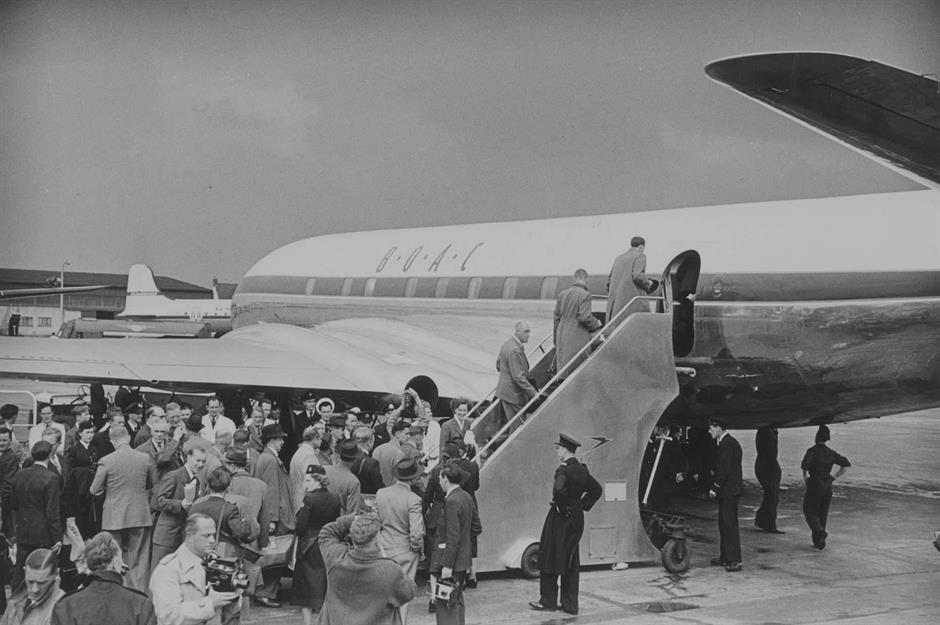
Most airliners of the time had unpressurised cabins and so were forced to fly low, going through the weather rather than above it, making for a frequently uncomfortable experience. However, the de Havilland Comet was a dream in comparison. With a pressurised cabin, it could fly at 40,000 feet (12,192m) allowing passengers to gaze out of its large windows to the clouds below in (relative) peace and quiet.
1940s: de Havilland Comet
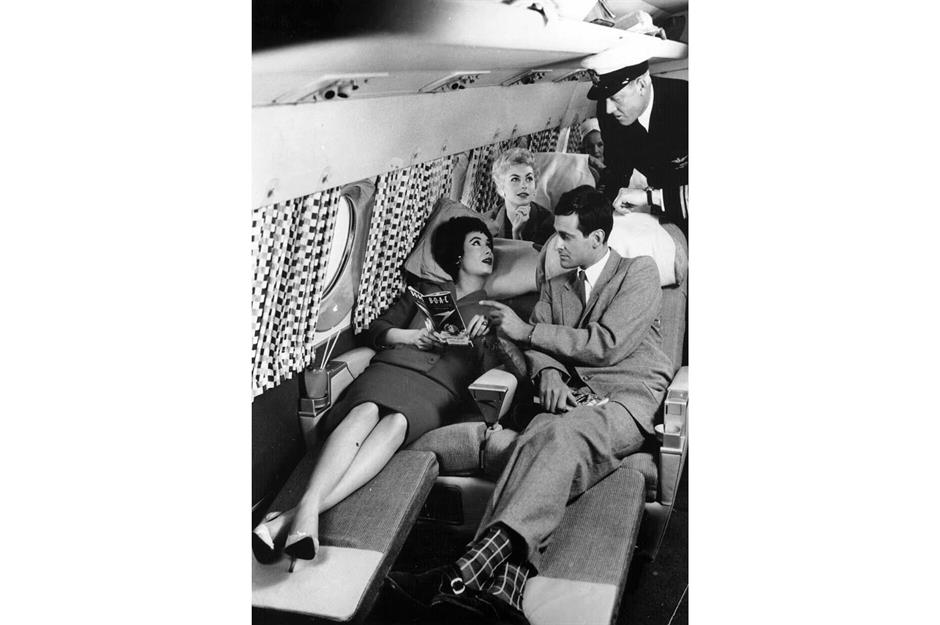
It had a promising start to life in the aviation industry, but sadly within a year of entering service, three major accidents – two of which were fatal for all on board – ruined its reputation. New versions of the Comet were rolled out in later years, but sales never fully recovered, especially after Boeing introduced its first jetliner, the 707. Eventually, in 1997, Comet flew its last flight.
1950s: Sud Aviation Caravelle
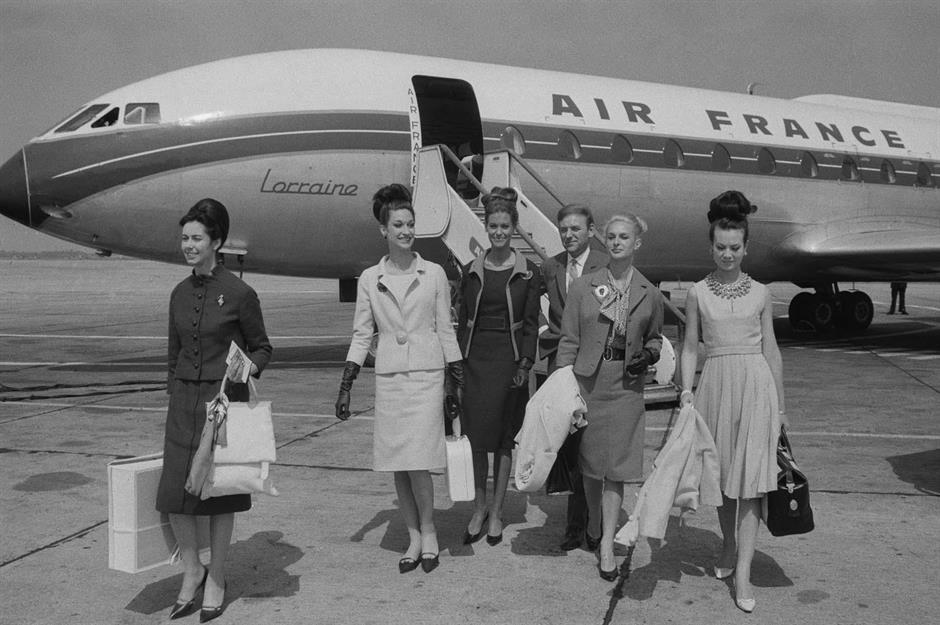
It doesn't look like a groundbreaking plane, but there's more to this aircraft's story than those peculiar triangular windows. The Sud Aviation Caravelle was the first jet aircraft to be produced for the short- and medium-haul markets. Created in France by SNCASE, it incorporated elements developed for the de Havilland Comet.
Production began in the early 1950s and by 1957 both Air France and Scandinavian Airline Systems (SAS) had ordered their first Caravelles.
1950s: Sud Aviation Caravelle
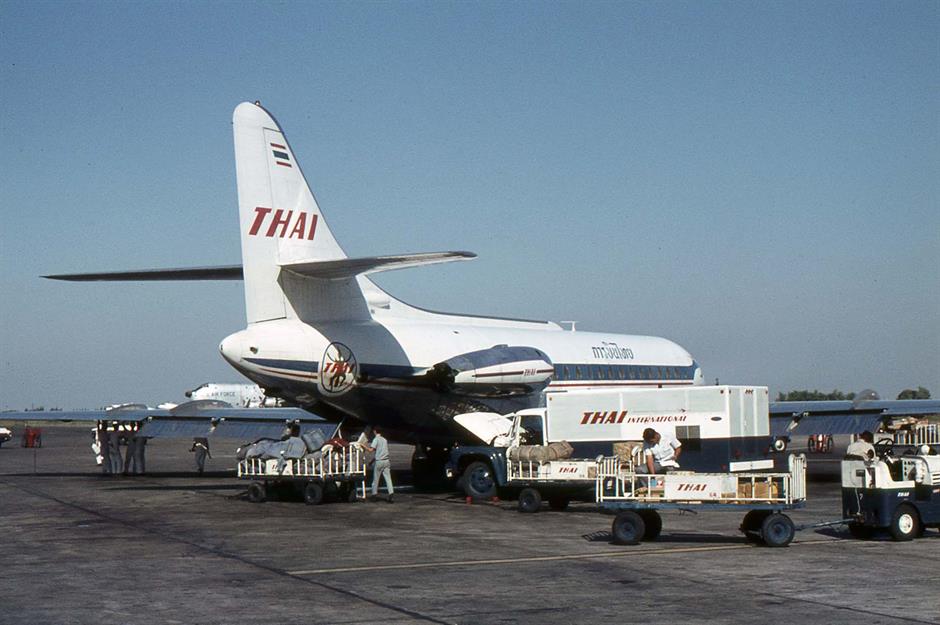
The aircraft's first commercial flight took place in 1959 for SAS and it went on to become one of the most successful first-generation jet planes in the world, serving airlines across Europe, the Middle East, USA and Asia. It had little competition for the first few years of its production, and 172 of the airliners had been sold within four years of launching.
1950s: Sud Aviation Caravelle
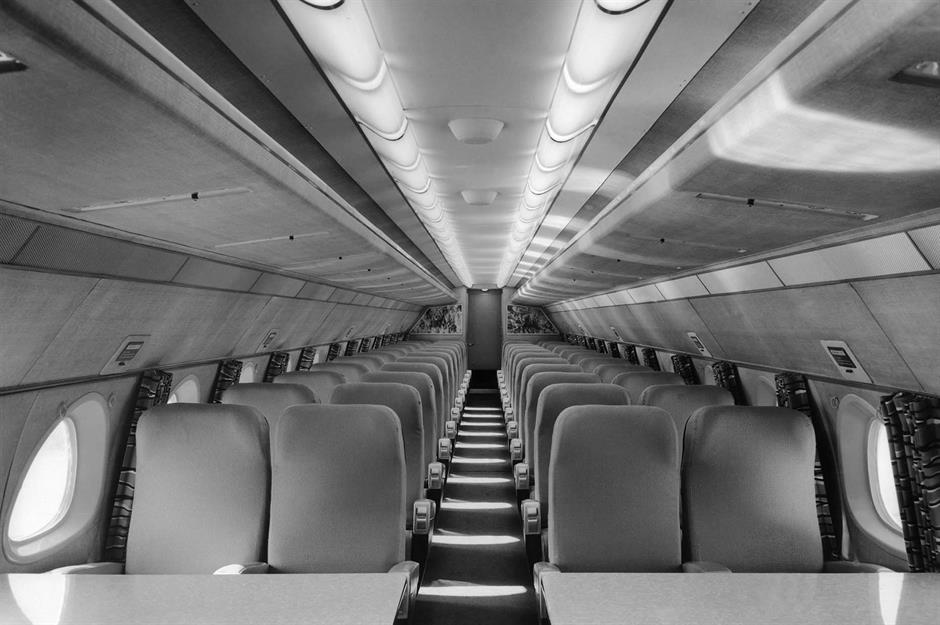
The original Caravelle could seat between 90 to 99 passengers, however, later versions increased the capacity up to 131 and was used by such operators as Air France, Lufthansa, United Airlines, SAS and Thai Airways. The aircraft was retired in 2005. Several planes remain on display on airfields and in museums in Europe, North America and Africa.
1950s: Boeing 707
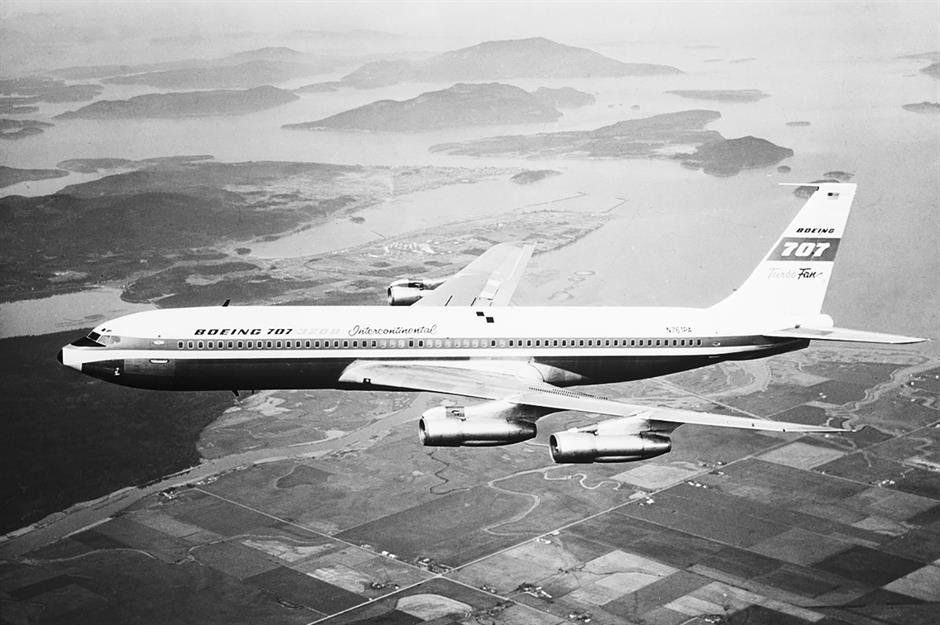
America's first jet airliner, the Boeing 707 kickstarted the jet age when it first hit the skies in 1958. In direct competition with the Douglas Aircraft Company, Boeing gambled vast sums of money on the 707's success, and the gamble paid off when the firm built and sold 1,010 models for commercial airlines between 1958 and 1978. In the 1960s the 707 dominated intercontinental flights and paved the way for the Boeing 747 – arguably the world's most famous passenger plane.
1950s: Boeing 707
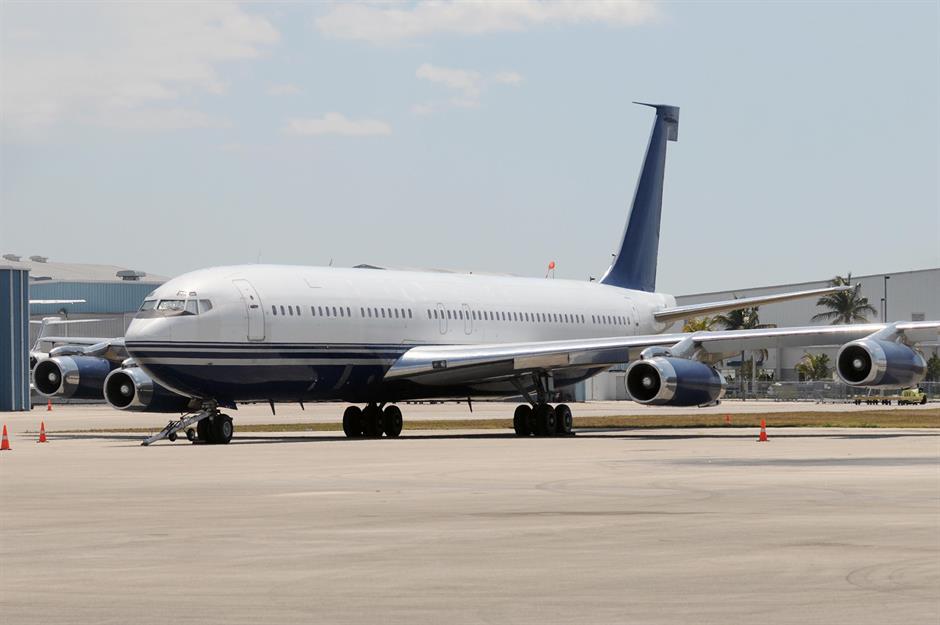
So, why was the 707 so successful? Well, it was faster than its main competitor – the Douglas DC-8 – and entered production earlier too. Boeing was also willing to make expensive adjustments and variations to meet the needs of different airlines – an expensive accommodation which meant that, although sales soared, the plane wasn't particularly profitable.
The first planes were ordered by now-defunct airline Pan-Am in 1955, and were 145 feet (44m) long, boasted a 131-foot (40m) wingspan and contained 160 seats.
1950s: Boeing 707
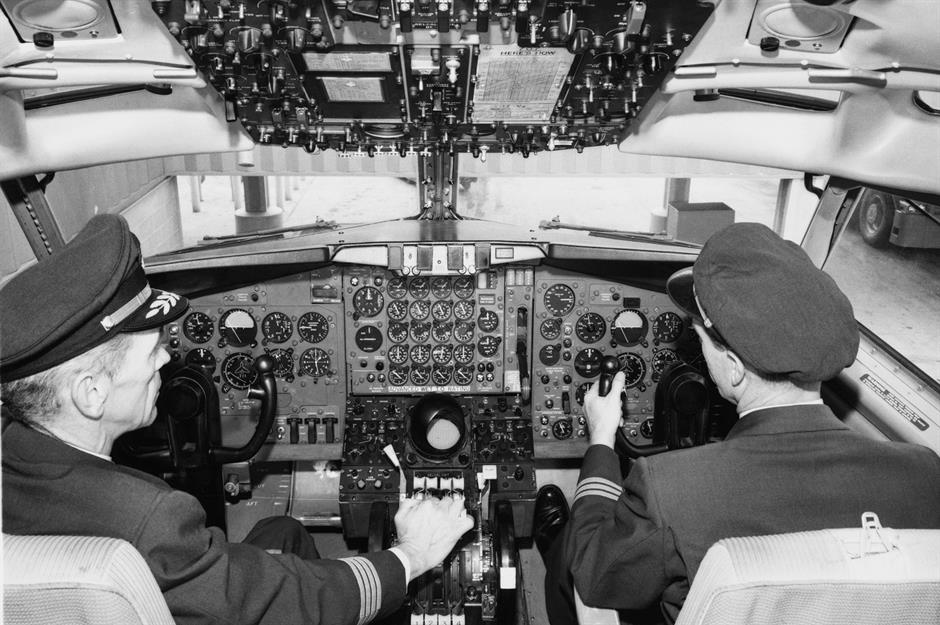
As mass tourism really took off through the early 1970s, the 707 was largely replaced by the widebody 747 which could welcome many more passengers. The last 707 flight in the US was a Trans World Airlines (TWA) flight from Miami to New York in 1983. The last 707s in regular passenger service were flown by Iranian operator Saha Air – and they were grounded along with the airline in 2013.
1960s: Concorde
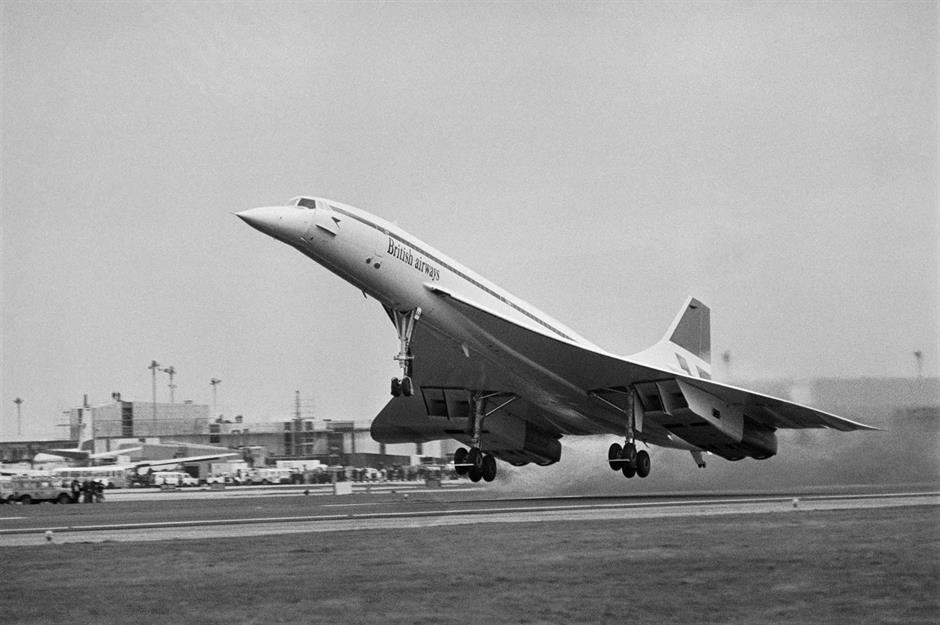
The ultimate iconic airliner, Concorde was a joint effort between British and French aero-engineering firms who made the dream of supersonic travel a reality. Launched in 1969, Concorde travelled faster than the speed of sound and could fly between London and New York City in around three-and-a-half hours (Concorde's transatlantic record was just two hours and 52 minutes). Only 20 of these groundbreaking jets were built, and all were operated by either British Airways or Air France.
1960s: Concorde
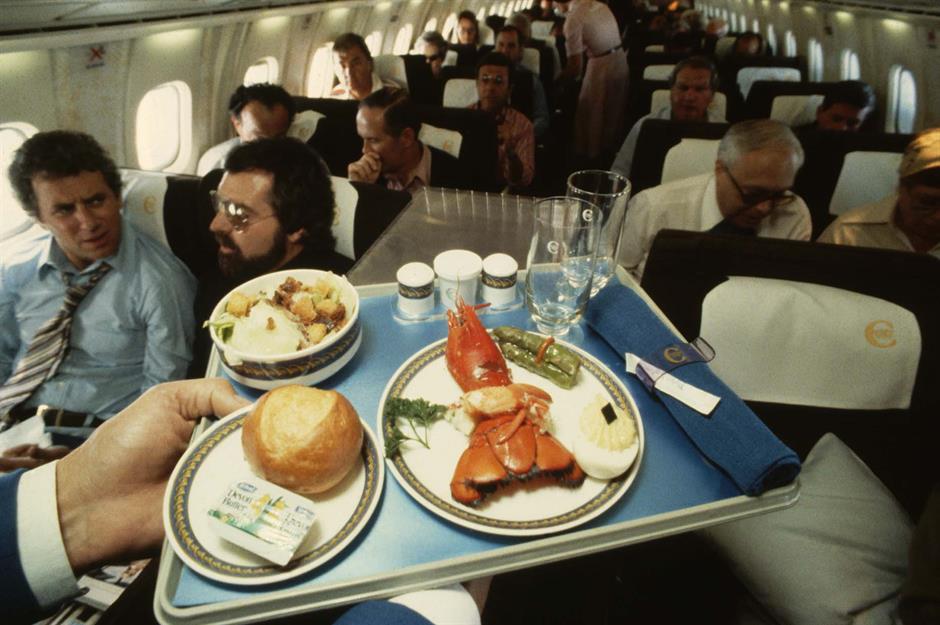
A challenge the aircraft faced was finding new routes. Because of the sonic boom produced when the plane broke the sound barrier, it wasn't legal to fly it over highly populated areas, limiting the aircraft's use around the world. Inside the plane though, passengers would have little knowledge of breaking the sound barrier, as the shockwaves did not reach inside the cabin.
Travellers were treated to caviar, lobster and guinea fowl while cruising at 1,340 miles per hour (2,158km/h).
1960s: Concorde
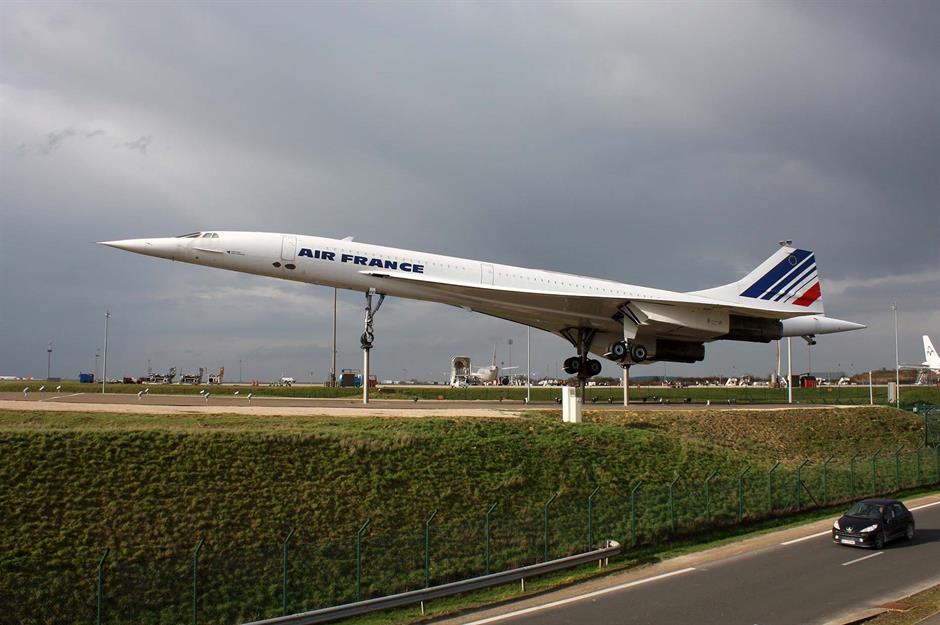
Concorde stopped flying in 2003, but it wasn't because of the horrific crash in 2000, when an Air France aircraft burst into flames and crashed shortly after take-off. Concorde's final demise was largely down to cost – the aircraft was incredibly expensive to run and, with a one-way ticket costing over £4,000 ($5,364), it was unaffordable to most. Many of the aircraft are now on display in museums around the world, while some parts, including seats, glassware and even brakes, were auctioned off.
1960s: Boeing 747
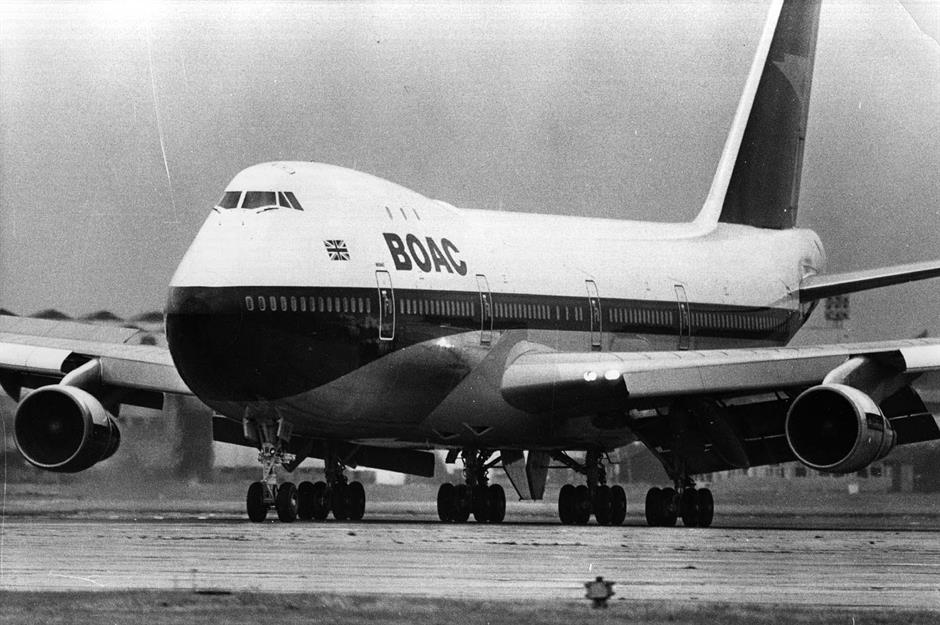
Often referred to as the Queen of the Skies, the Boeing 747 is perhaps the world's most famous jetliner. The world's first quad-jet engine dual-level aircraft first flew in February 1969, taking off from the new runway at the manufacturer’s plant in Everett, Washington in the USA. Since that moment, it became one of the most popular and prolific jets for airlines, beloved for its size – it was the largest of its kind when launched – and economic viability.
1960s: Boeing 747
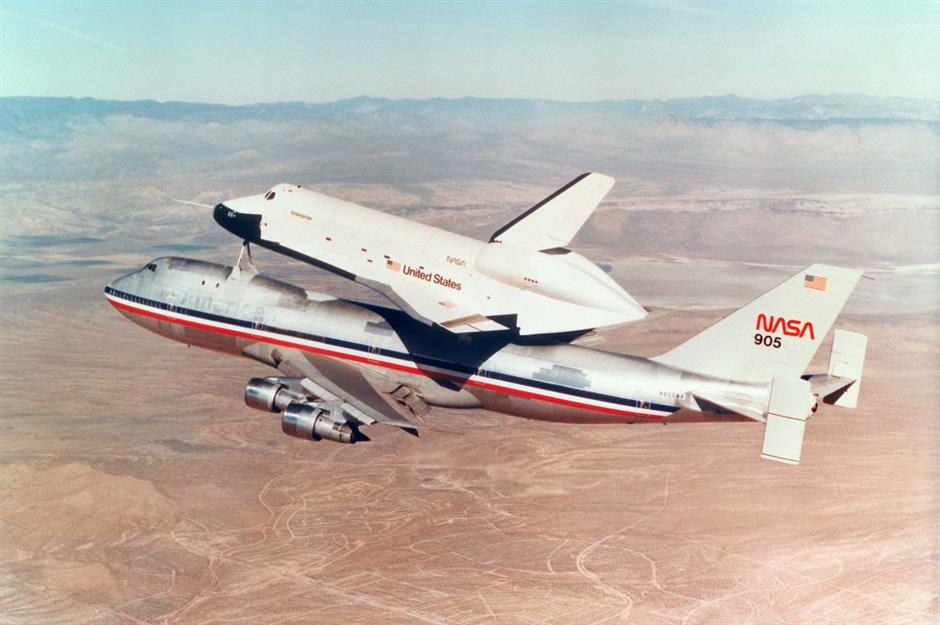
The original jumbo jet, the Boeing 747 held the passenger capacity record for 37 years and was more than twice the size of any other airliner at the time. A masterpiece of industrial design, this behemoth famously transported the Space Shuttle on its back in 2012, when the Endeavour spacecraft was moved from the Kennedy Space Center in Florida to Los Angeles, California.
1960s: Boeing 747
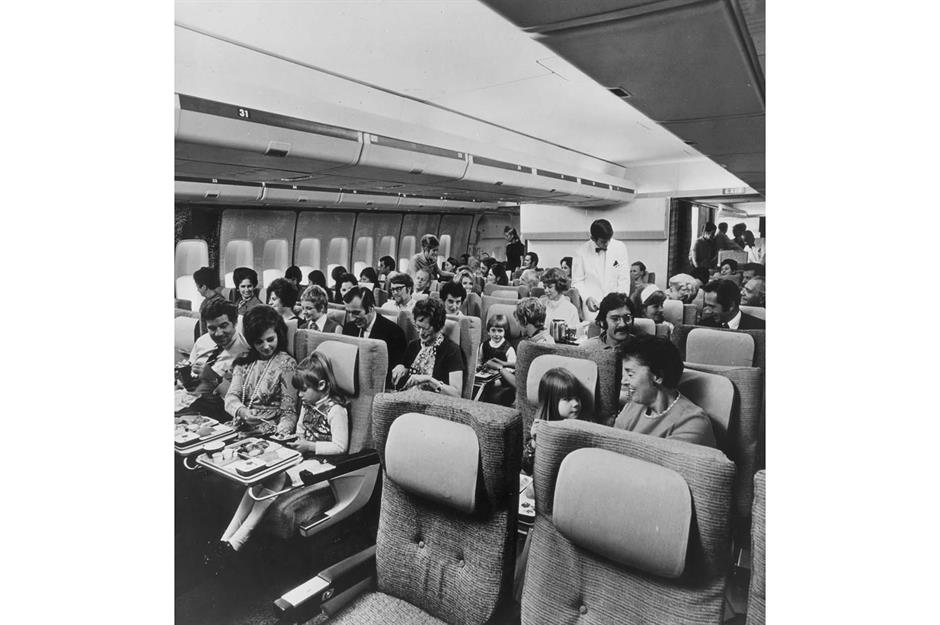
Despite its former popularity, production of the Boeing 747 stopped in 2022 and most airlines, including British Airways, have retired their fleets. Currently, there are just five airlines, including Lufthansa, still using 747s for their operations. So far in its lifetime, the groundbreaking plane has transported more than 3.5 billion people – the equivalent of half of the world's population.
1980s: Airbus A320
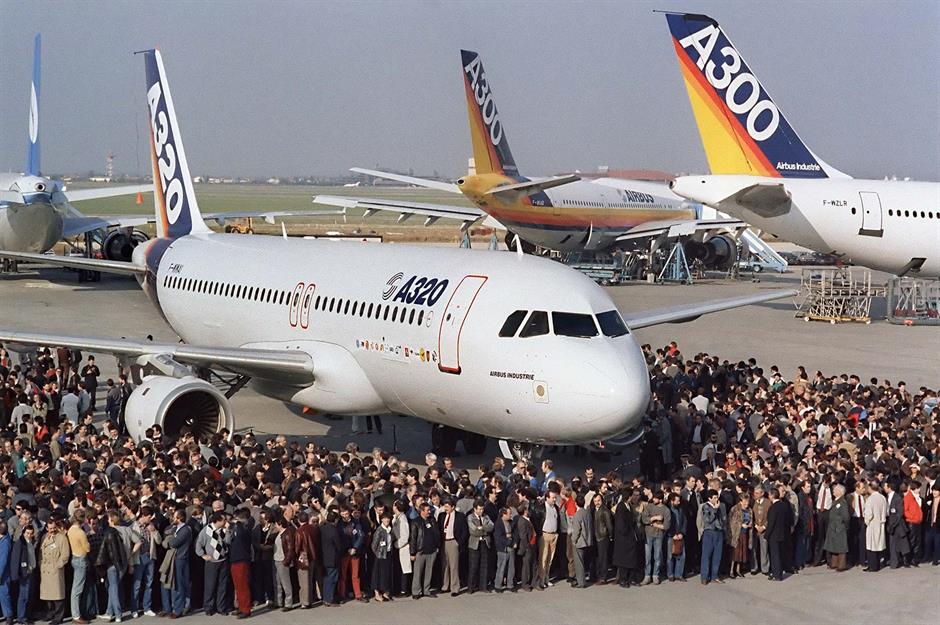
Launched in the late 1980s, the A320 was Airbus's attempt at catching up with its biggest competitor, Boeing. This Airbus aircraft made significant technological advancements – it was the first to implement fly-by-wire flight controls, replacing manual controls with an electronic interface, and side-sticks for improved crew ergonomics. The fly-by-wire technology was later incorporated into other Airbus aircraft, like the A380.
1980s: Airbus A320
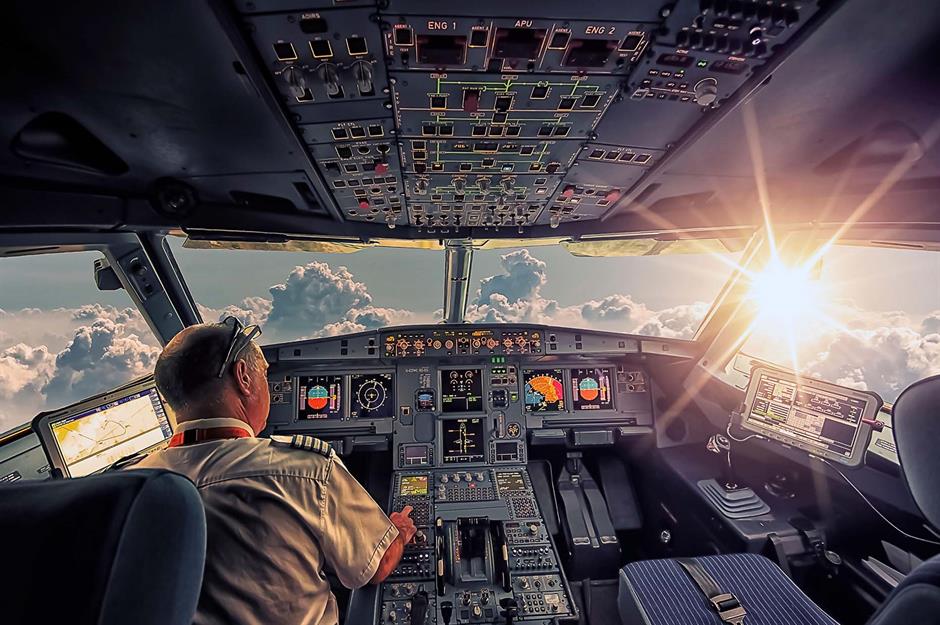
The single-aisle, twin-engine jet made its maiden flight in 1987 and was instantly adopted by Air France. Orders from various airlines across the world rolled in throughout the coming decades and the plane was redesigned into other variants like the stretched A321 and shrunken A319. Its latest version A320neo is enhanced to benefit from up to 30% less fuel burn, compared to previous generation aircraft, and increased flight range of up to 560 miles (900km).
American Airlines is currently the largest operator of A320s, boasting almost 70 of them in its fleet.
1980s: Airbus A320
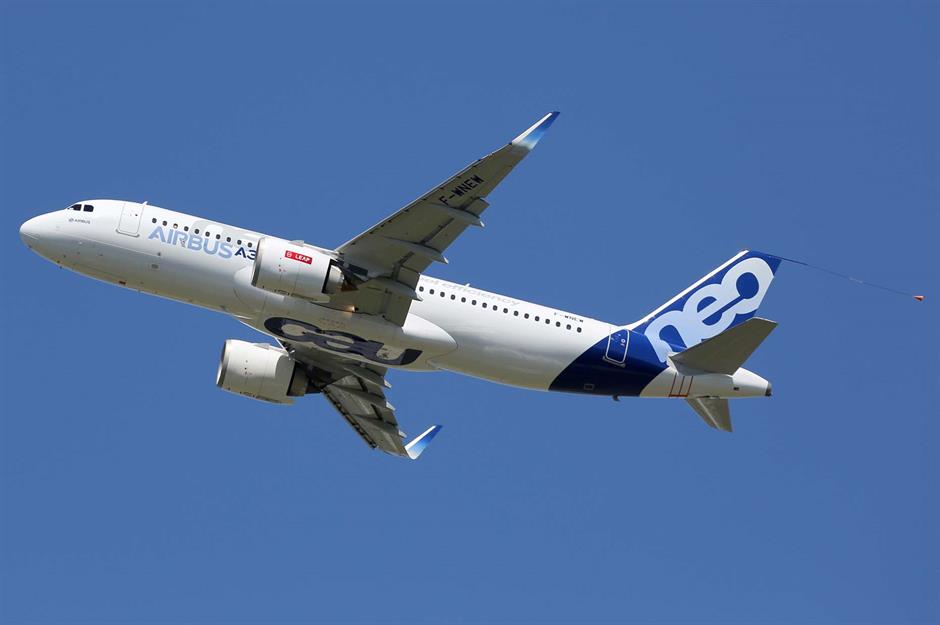
Some 40 years down the line Airbus has not only caught up to Boeing but overtaken it, as far as the title for the world's most popular commercial aircraft is concerned. As Boeing's 737 MAX crisis continues, following the fatal crashes of Lion Air and Ethiopian Airlines in 2018 and 2019, orders for the A320 have overtaken those of the 737. Airbus delivered 602 A320s in 2024, up from 571 in 2023 and 55 in 2022.
1990s: Boeing 777
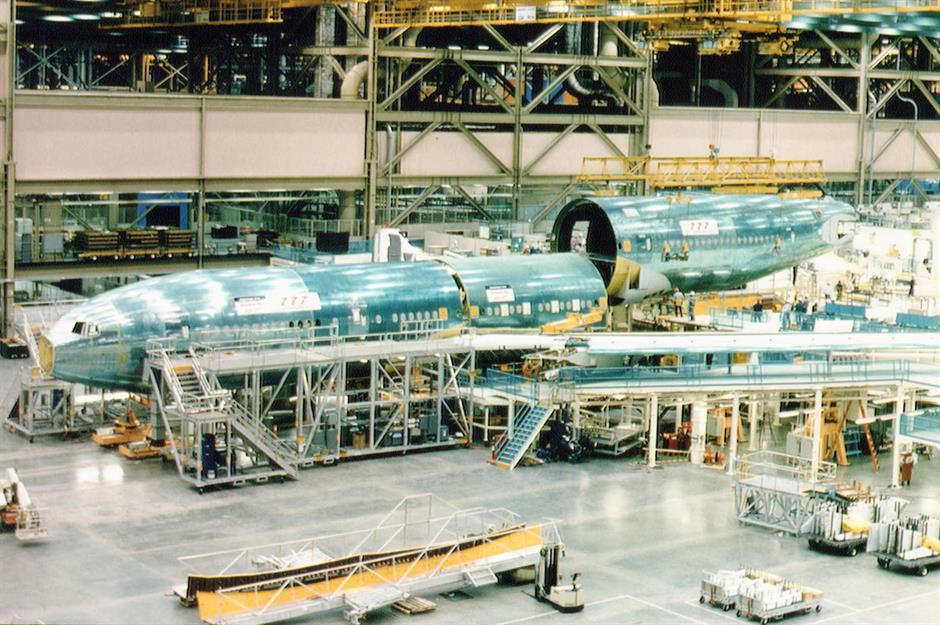
The world's biggest twinjet aeroplane, the Boeing 777 isn't just special because of its size. While it has the largest capacity of any twinjet on the market (it seats up to 451 passengers), it was the first aircraft created entirely using computer-aided design.
1990s: Boeing 777
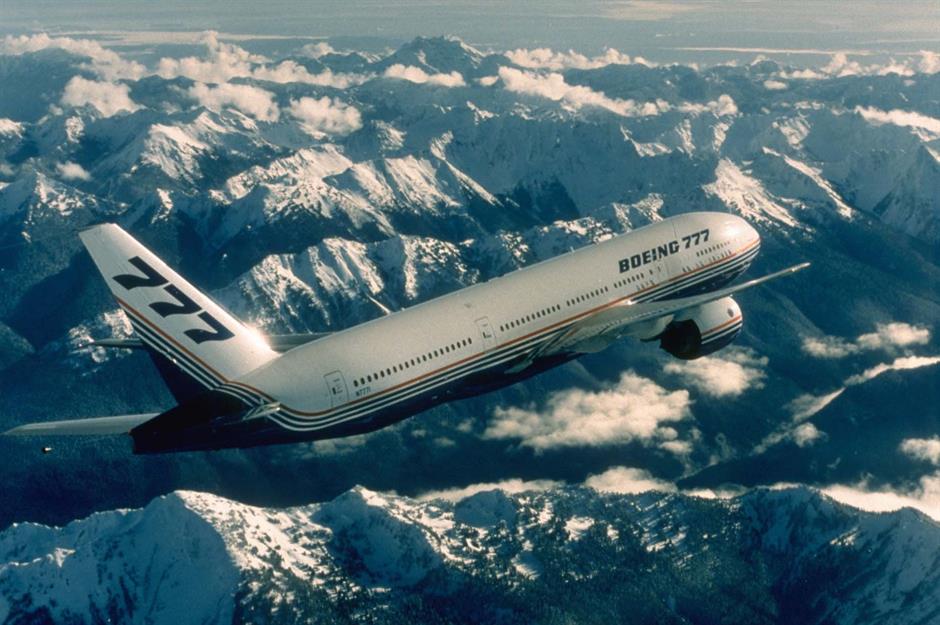
It was built in consultation with eight major airlines, including United Airlines and Emirates. The former was responsible for the aircraft's maiden flight on 7 June 1995, and orders for this widely used model and its modern variants, like the 777X, are still coming in today. As of January 2025, over 2,300 orders (and counting) for Boeing 777s have been made.
1990s: Boeing 777
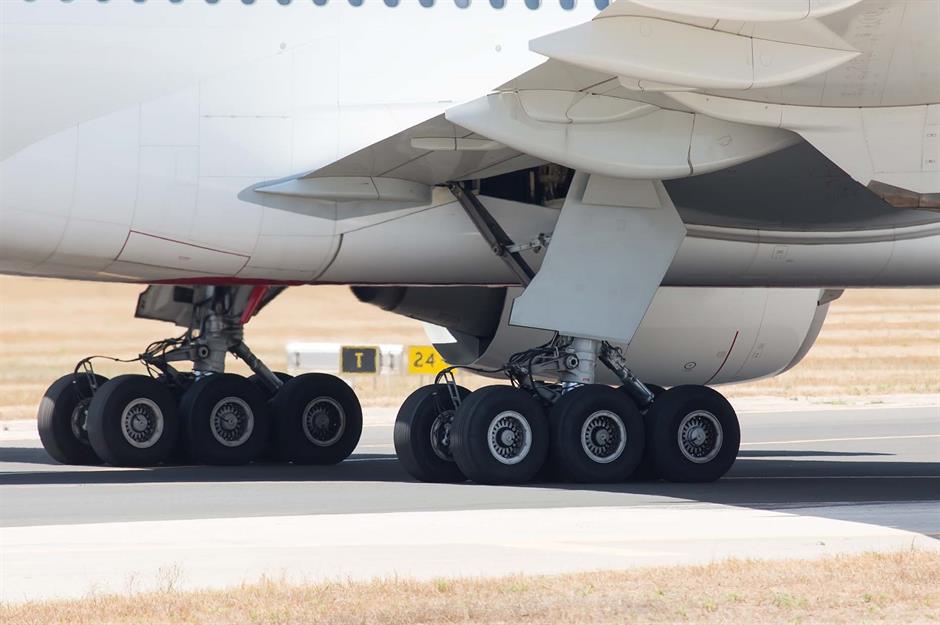
One of the most defining features of the Triple Seven, as it's known informally, is its large landing gear. Each leg has a set of six tyres, making it capable of withstanding a load of up to 32.3 tonnes (29,294 kg). The aircraft also still holds the record for the longest nonstop flight by a (non-scheduled) commercial aeroplane, set in 2005 when the 777 flew eastbound from Hong Kong to London, covering 13,422 miles (21,633km).
2000s: Airbus A380
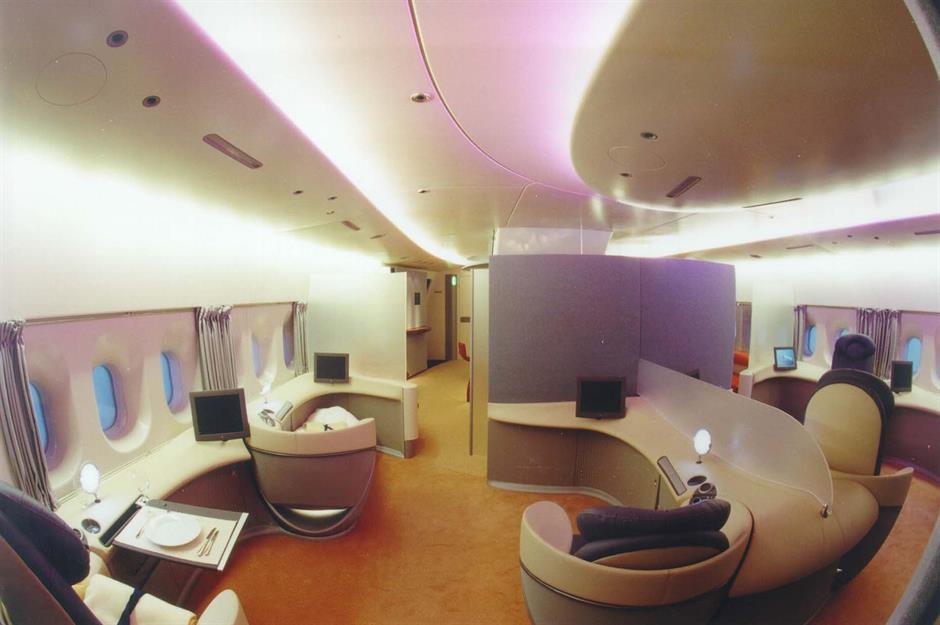
Although the Airbus A380 enjoyed a short production life of just 12 years, it's broken quite a few records. Known as a superjumbo jet, it's the largest passenger airliner to hit the skies, carrying up to 853 travellers at one time across two decks. It was the first airliner to have two full decks for passengers (most previous double-deckers have only had partial upper decks) and its maximum take-off weight is that of seven Boeing 737s.
Pictured is a mock-up of the A380s interior cabin at its first presentation in 2005.
2000s: Airbus A380
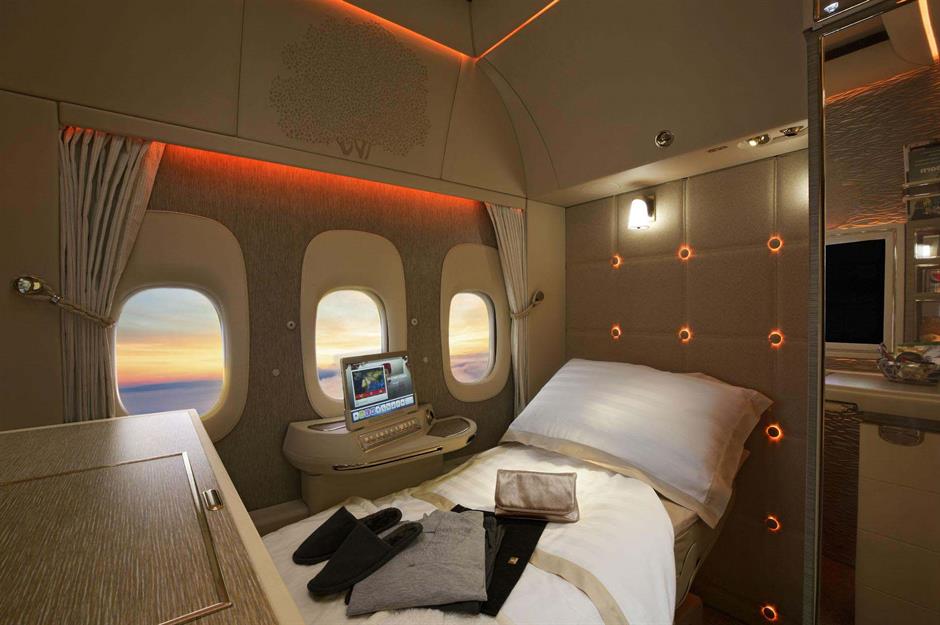
The A380's size makes it a much smoother flight for passengers. The plane has over 5,000 square feet (465sqm) of floor space and those lucky enough to travel in first class can expect full-on bedrooms, with plush mattresses and en suite toilets. The A380 is also the only plane in the world to have a working shower.
2000s: Airbus A380
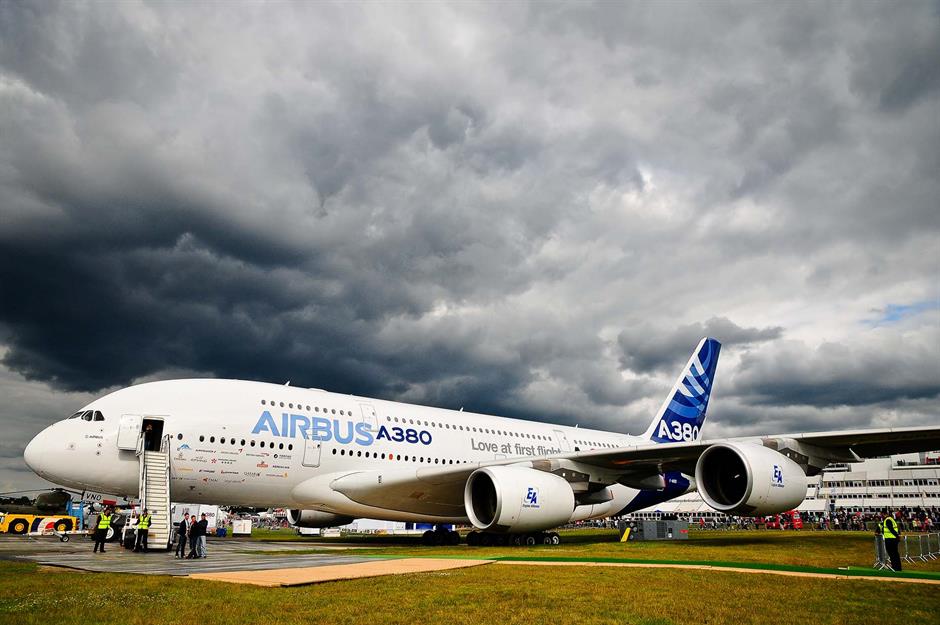
Initially snapped up by high-end airlines like Emirates and Singapore – the latter was responsible for the A380's maiden flight and the former is the world's largest operator of A380s – and popular with passengers, the superjumbo has since been deemed economically and environmentally inefficient. What's more, they're not great for airports' schedules, as planes taking to the runway after the aircraft have to wait at least three minutes before take-off due to the turbulence in its wake.
2000s: Airbus A380
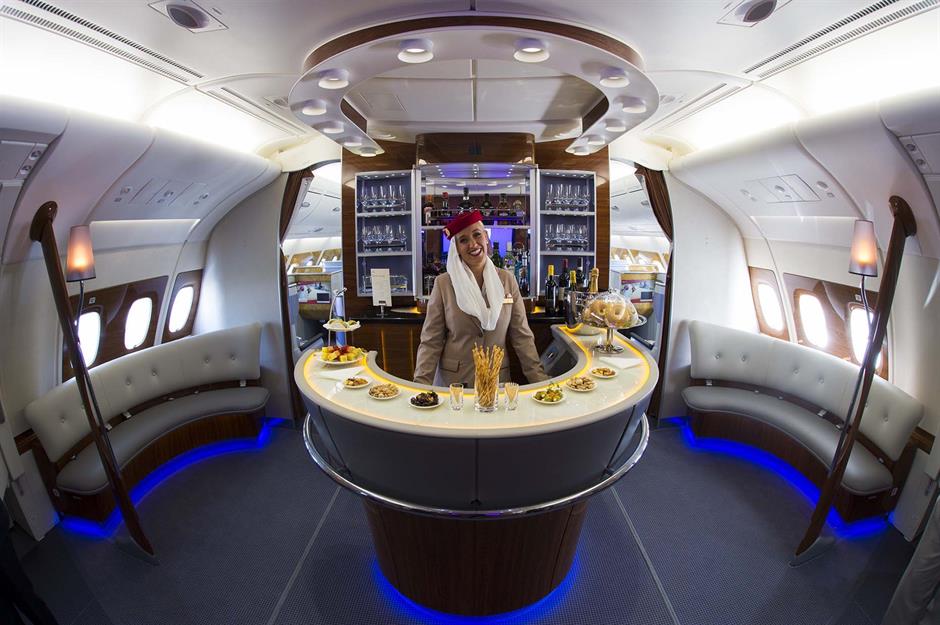
In July 2020, components of the final Airbus A380 to be built rolled off the production line to rapturous applause by staff at the factory in southwest France. The last planes were assembled at Airbus's Toulouse factory and were delivered to Emirates at the end of 2021. Although there are still over 130 aircraft in operation, the first retired Emirates A380 was repurposed into furniture and memorabilia for fans of the plane to purchase.
The aircraft's iconic onboard bar was sold at auction for a whopping £43,862 ($50,000) in October 2022.
2000s: Boeing 787
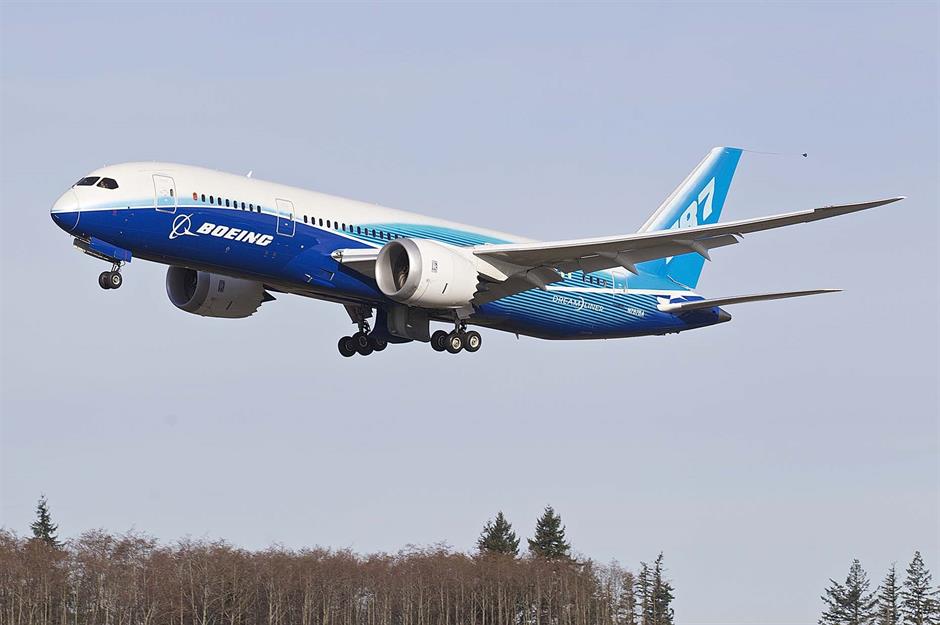
The prototype of Boeing's 787 airliner rolled out in 2007 with 50 initial orders from All Nippon Airways. After Boeing dropped its Sonic Cruiser project (which was intended to rival Concorde), all hands were on deck to develop a wide-body jet airliner that focused on efficiency and, although some development issues led to a series of cancelled orders, it's now outperformed the A380 and become a very popular long-haul airliner.
2000s: Boeing 787
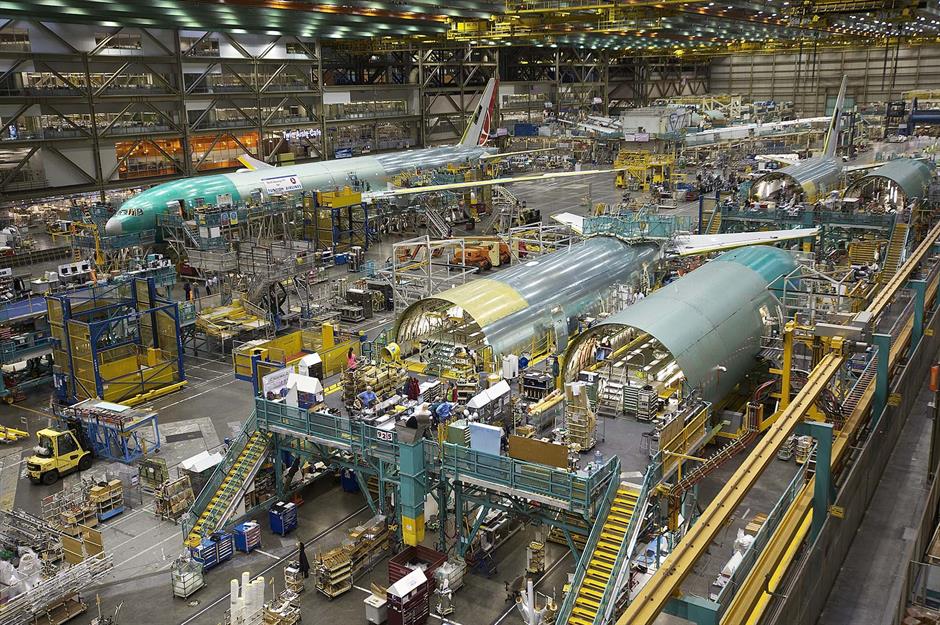
There are several features that make the Dreamliner, as the 787 is called, so special. Major aerodynamic improvements mean a 20% increase in fuel efficiency, which combined with the aircraft's lightweight body and all-new wing design, means the aircraft is incredibly energy- and cost-efficient. It's also the first-ever airliner to be constructed primarily out of composite materials – the body is assembled by joining together large barrel sections rather than by attaching multiple aluminium sections with thousands of fasteners.
2000s: Boeing 787
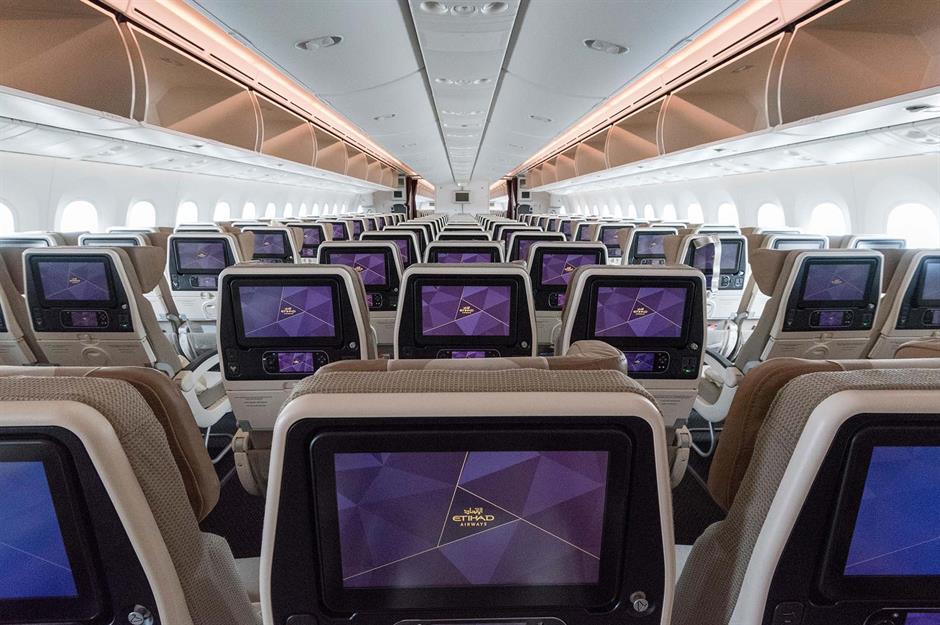
Inside, the 787 can seat up to 336 passengers with as many as nine seats and two aisles abreast. Thanks to the composite body, the aircraft has larger windows that have replaced plastic window shades with smart glass that offers five levels of transparency. The Dreamliner also claims to minimise jet lag thanks to higher pressure inside the aircraft and higher humidity levels (15% instead of the typical 4%), which leaves passengers more refreshed.
2010s: Airbus A350
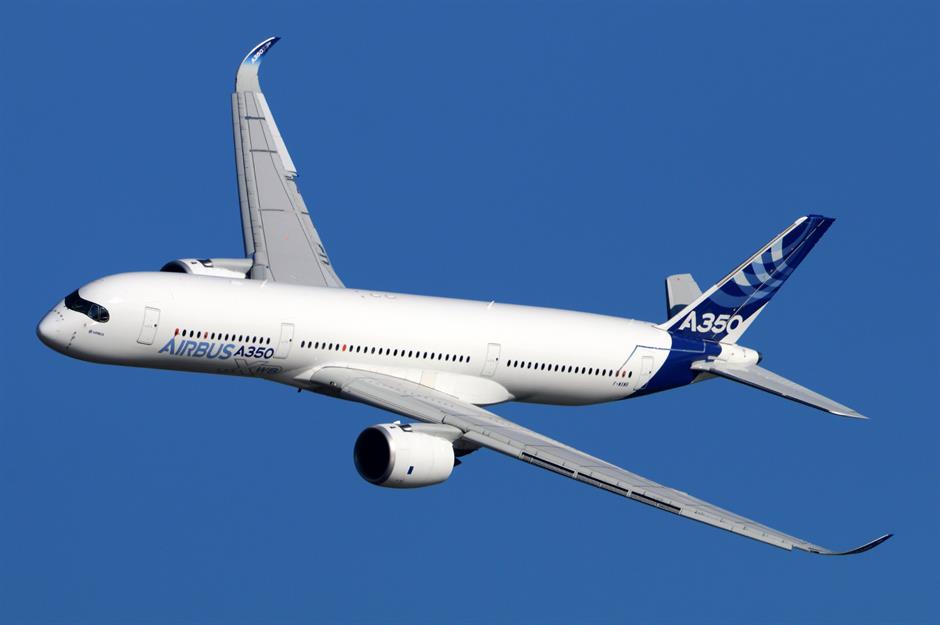
At more than 240 feet (74m) long and 20 feet (6m) wide, the Airbus A350 is one massive plane. A direct competitor to the Boeing 787 and 777 models, the A350 first hit the skies in 2015, and has now completed over 1.5 million flights worldwide. The 308-tonne plane fits nine seats across in two of its typical three seating classes, with 13-inch in-flight entertainment screens and enlarged overhead lockers.
Airbus proudly boasts that the plane is 'the quietest twin-aisle cabin in the skies', with LED lighting to encourage sleep and minimise jet lag.
2010s: Airbus A350
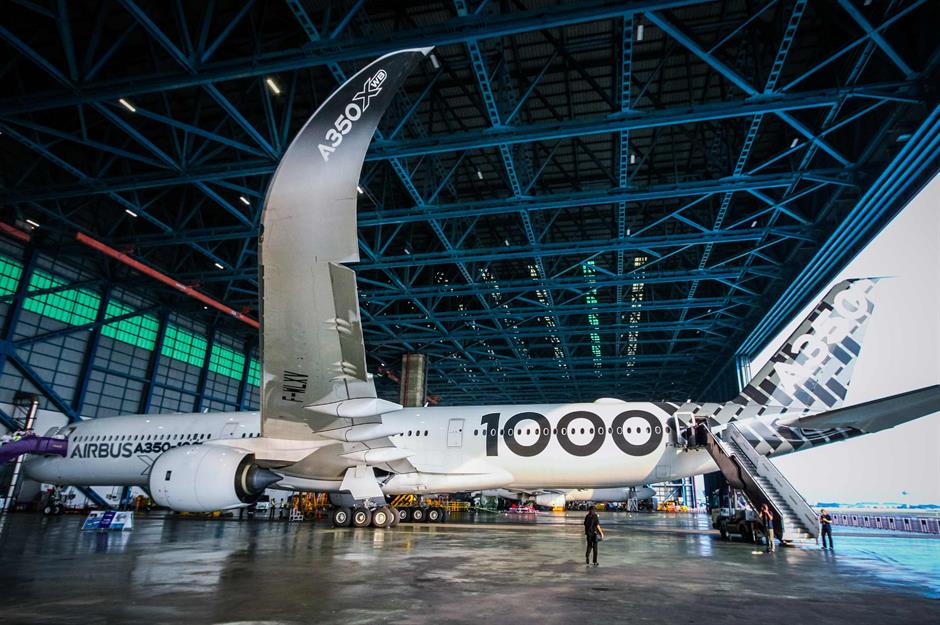
The plane is particularly popular for ultra-long-haul travel, and could fly from New York to London two-and-a-half times without refuelling. Both the world's longest commercial flights (two Singapore Airlines routes between Singapore and New York) use the A350, as does the similarly lengthy flight from Singapore to San Francisco. Project Sunrise – the codename for the 19+-hour flight between London and Sydney currently being developed by Qantas, which should become the world's longest non-stop route on completion – is also set to use the plane.
The inaugural flights are scheduled to take-off in mid-2026, starting with Sydney to London and New York.
2010s: Airbus A350
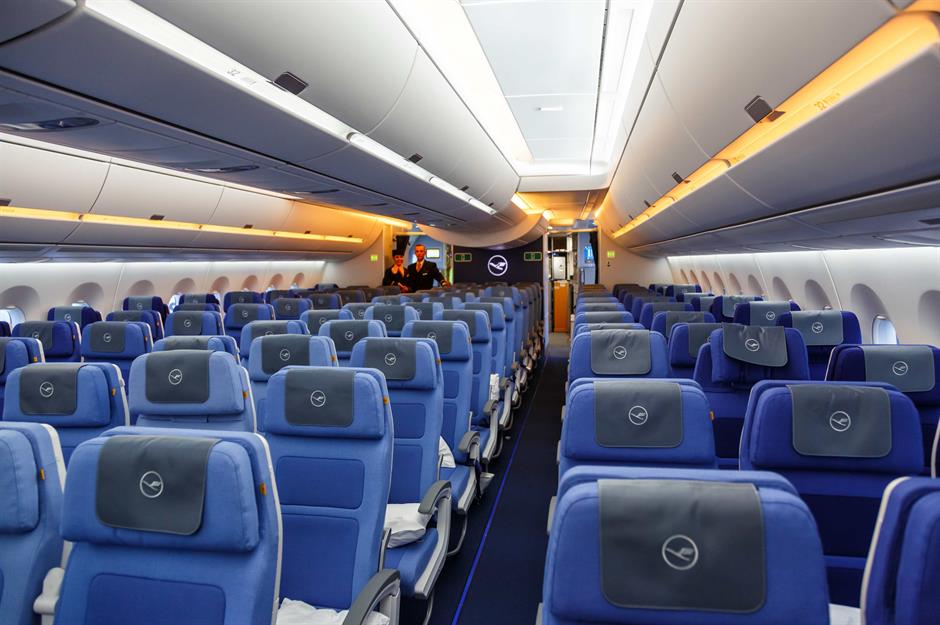
To purchase an Airbus A350-900 you'll need more than £250 million ($320m), while the slightly larger Airbus A350-1000 will put you back more than £287 million ($366m). The A350-1000 was released in 2018 and is a little larger than the classic A350-900 model, with an extra 23 feet (7m) in length, slightly increased wing size and 40 extra maximum capacity.
2020s: Airbus A330neo
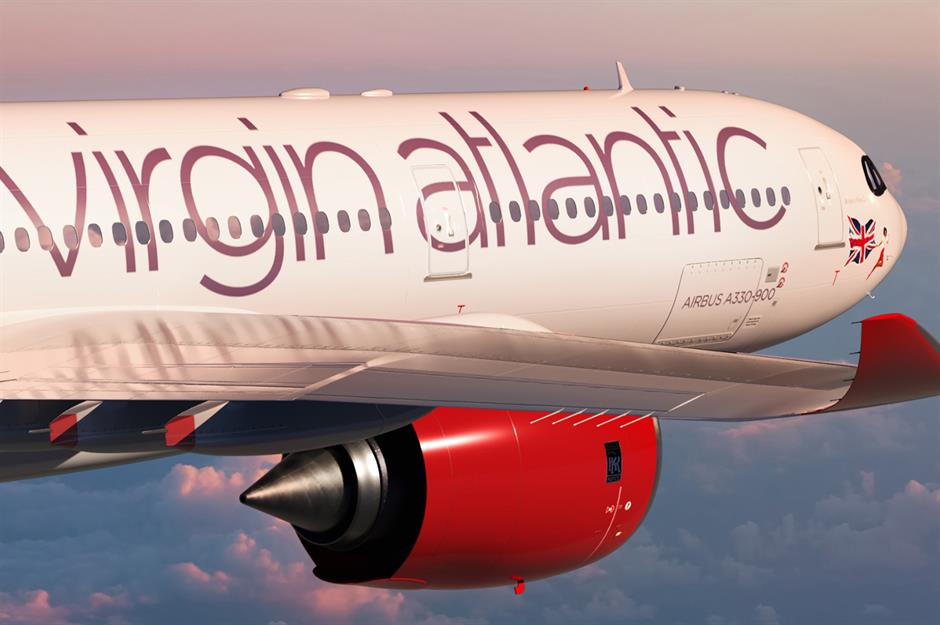
In October 2022, the new Airbus A330neo took its first passengers from London to Boston. Virgin Atlantic was the first airline to order the state-of-the-art aircraft, which is now used by Condor, TAP Air Portugal, Delta and Lion Air, among others worldwide. Boasting a wingspan of 210 feet (64m), it's one of the most energy-efficient models in the sky and flies further and faster than its immediate rivals. On board, it promises a 'premium, personalised experience for every customer'.
2020s: Airbus A330neo
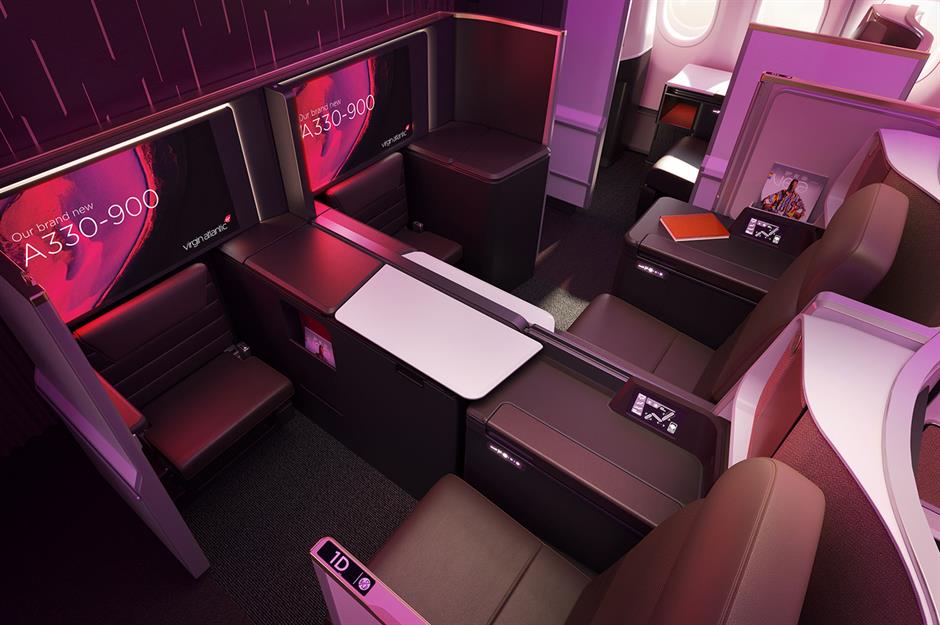
Among the cool cabin features are a new Upper Class seat and the Retreat Suite. The latter consists of two exclusive suites with 6ft 7in (2m) seats-turned-beds, 27-inch touchscreens and an ottoman that doubles as an extra seat. Award-winning social space The Loft has also had a revamp. It now has space for eight people to enjoy a drink (or three) from the self-service fridge. Premium and Economy have not been forgotten about either – both have improved comfort, connectivity and storage.
2020s: Airbus A321XLR
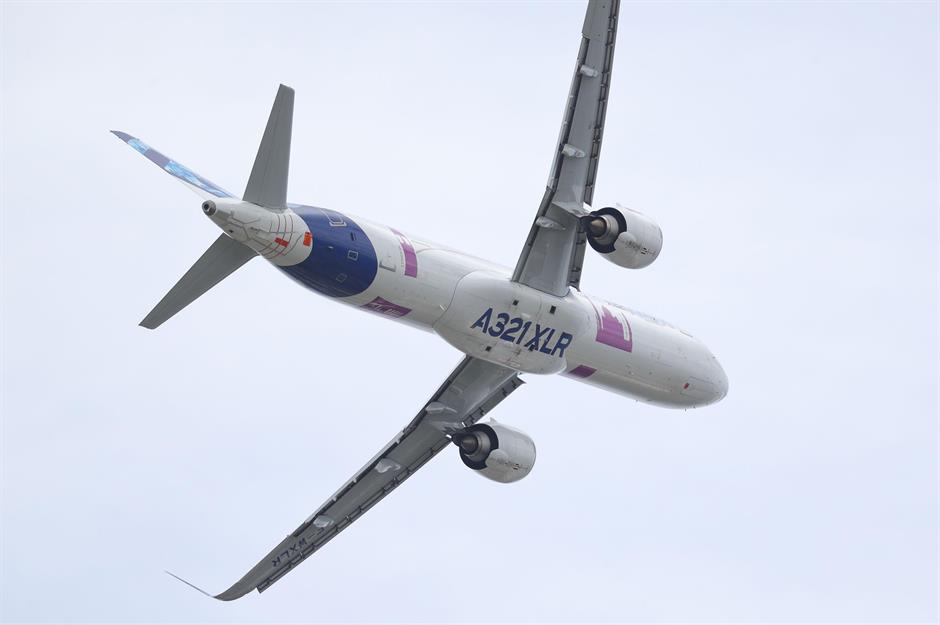
Based on the popular A321neo, this fully optimised aircraft is set to take the world of air travel in a bold and exciting new direction. Boasting 30% lower fuel burn and CO2 emissions than the previous generation of planes, as well as a noise footprint that's 50% smaller, it has a maximum flight time of 11 hours and can fly up to 4,700 nautical miles.
Airbus has talked about it having 'long-haul range, single-aisle economics', owing to the fact it has the cost-efficiency of a narrow-body aircraft and can also fly big distances (bigger, in fact, than any other single-aisle plane on the market). In June 2022, it made its maiden flight. After extensive testing, it completed its first commercial flight in November 2024 – flying from Madrid to Boston.
2020s: Airbus A321XLR
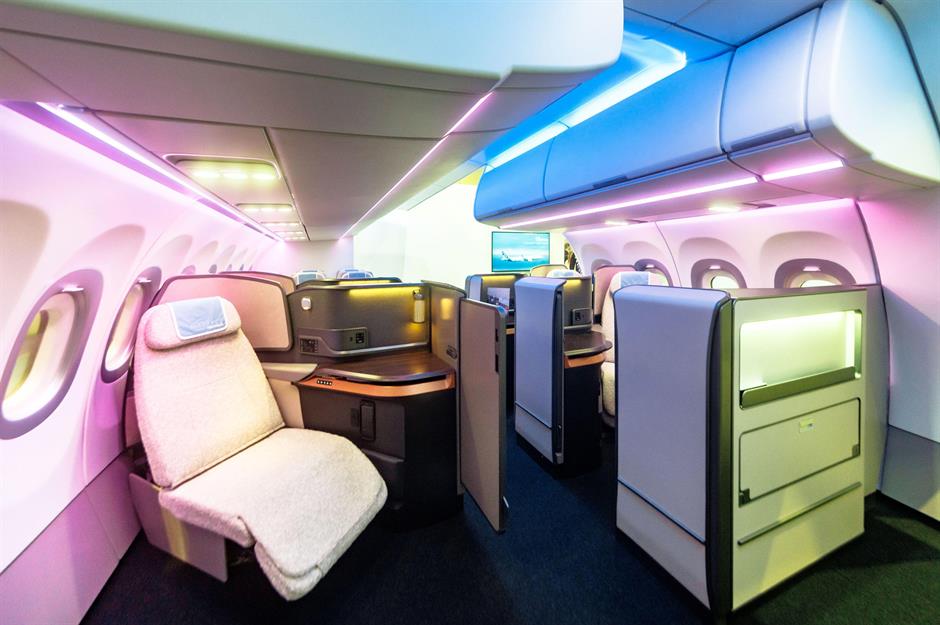
If the lower fuel burn and smaller noise footprint didn't grab your attention, perhaps this plane's superior passenger experience will. With its wider economy seats, full-flat business class seats and high-spec in-flight entertainment, you're sure to have a nice time onboard whether you're flying between Paris and Vancouver or Kuala Lumpur and Brisbane.
The maximum seating capacity of the Airbus A321XLR is 244 passengers. Other standout features inside the plane include the industry-leading overhead bin capacity and a customisable lighting experience unlike any other.
Comments
Be the first to comment
Do you want to comment on this article? You need to be signed in for this feature